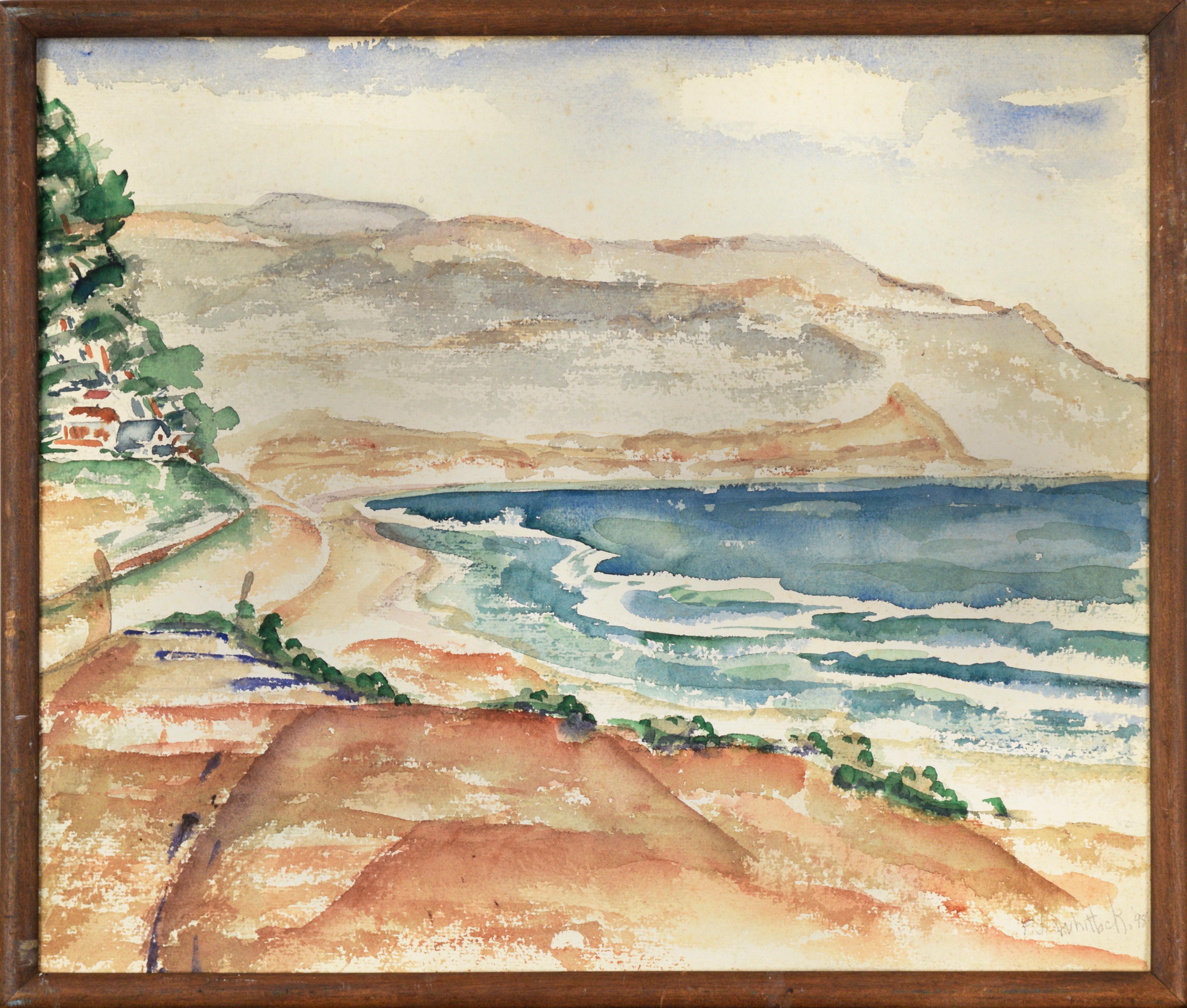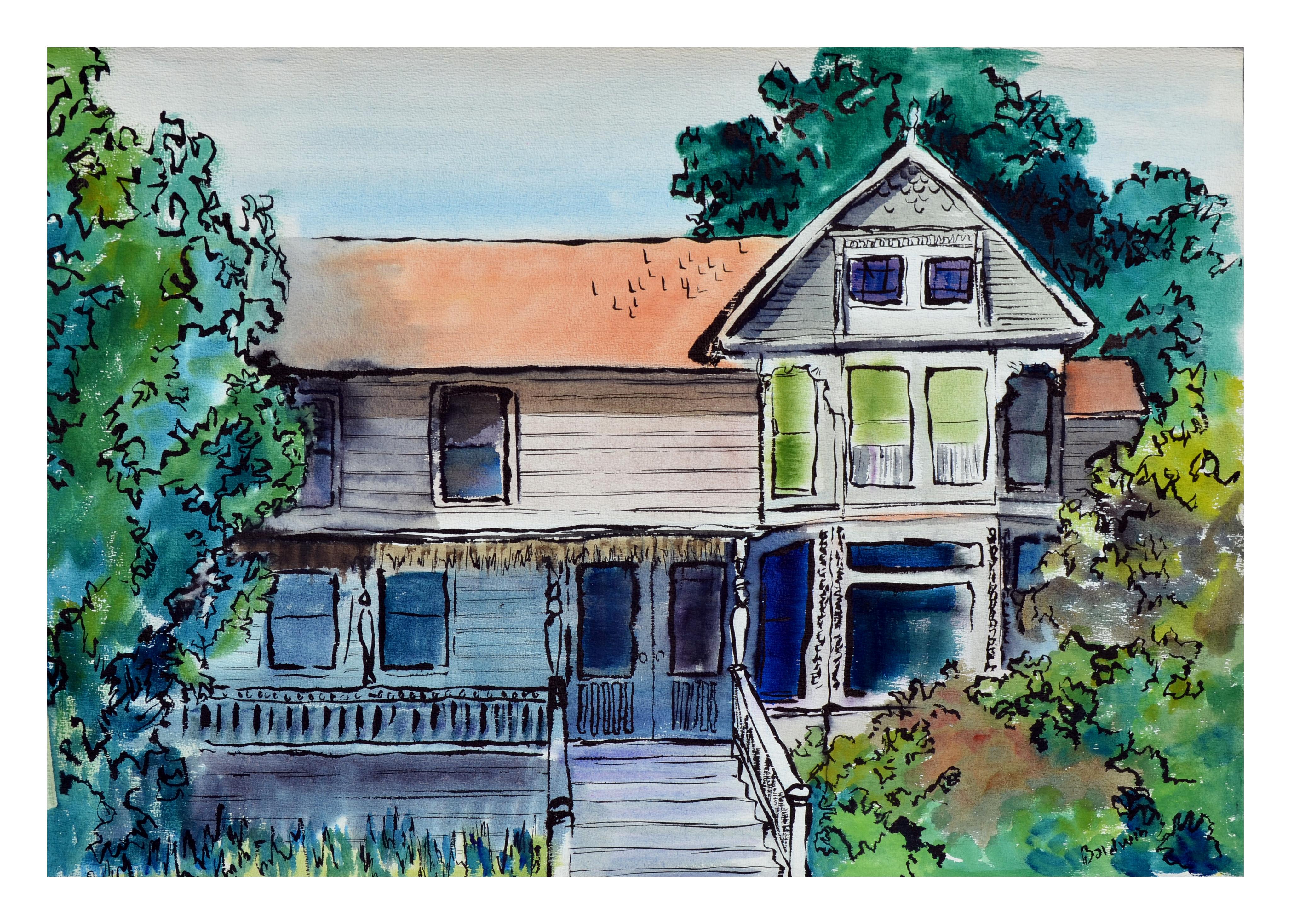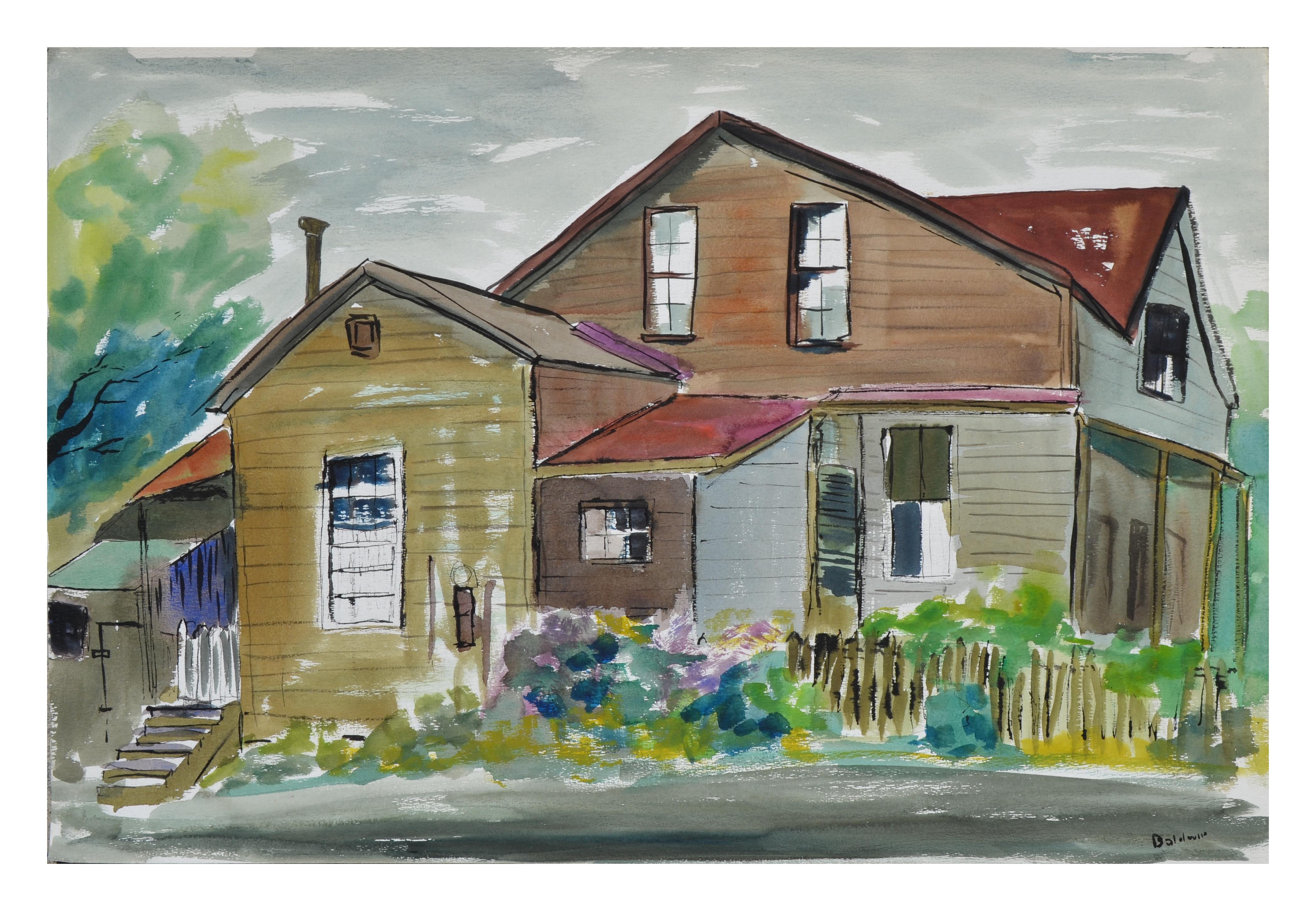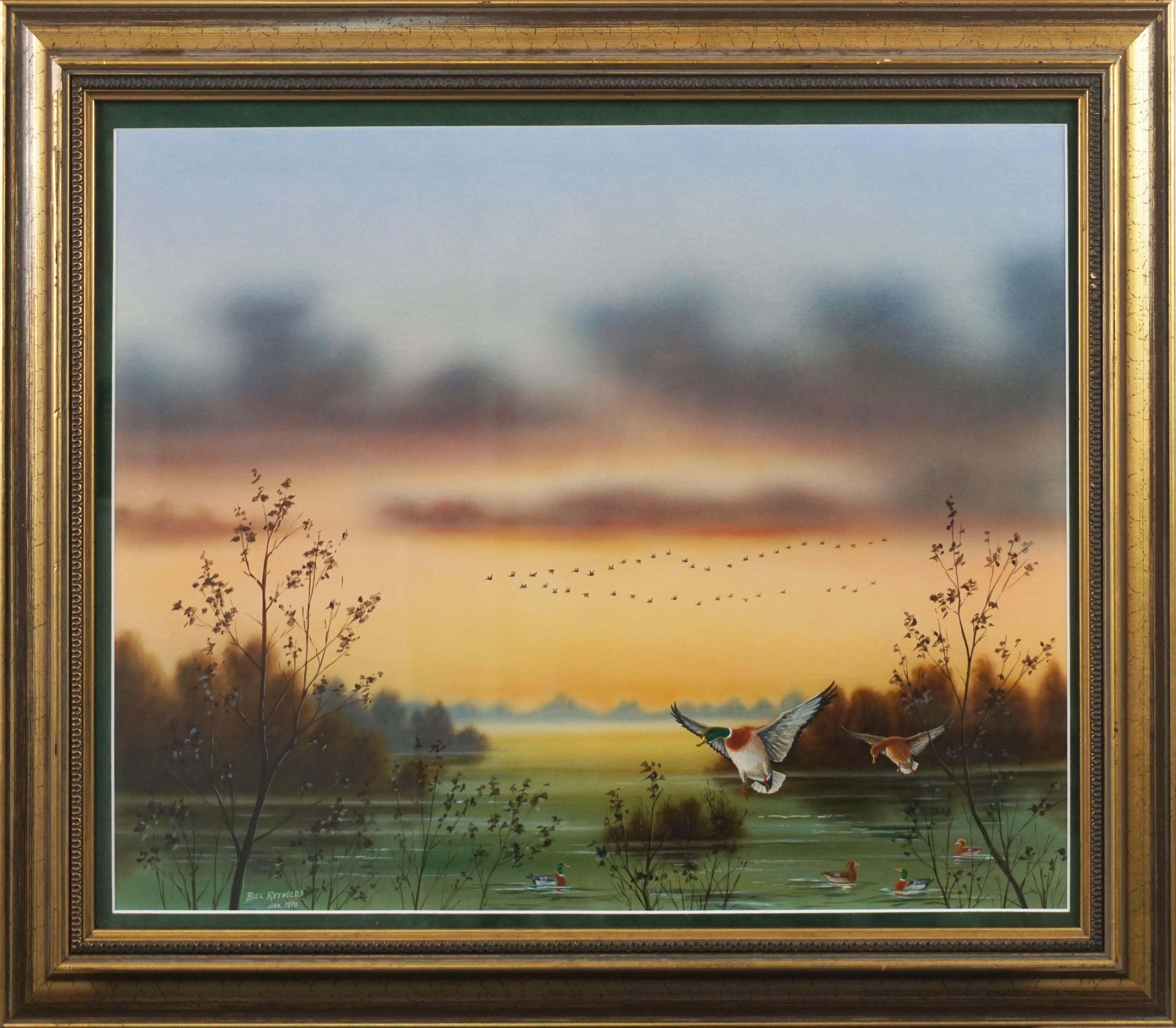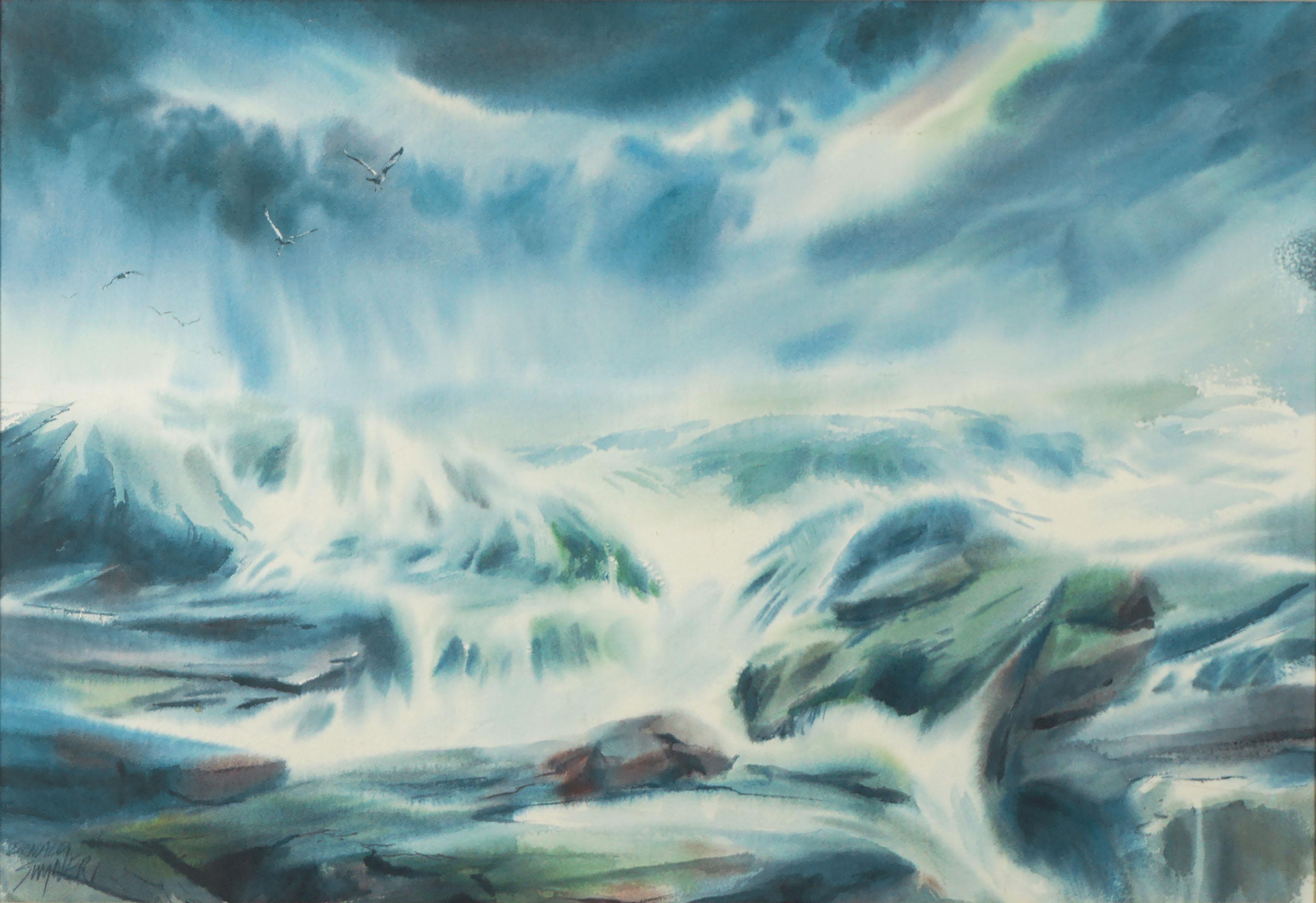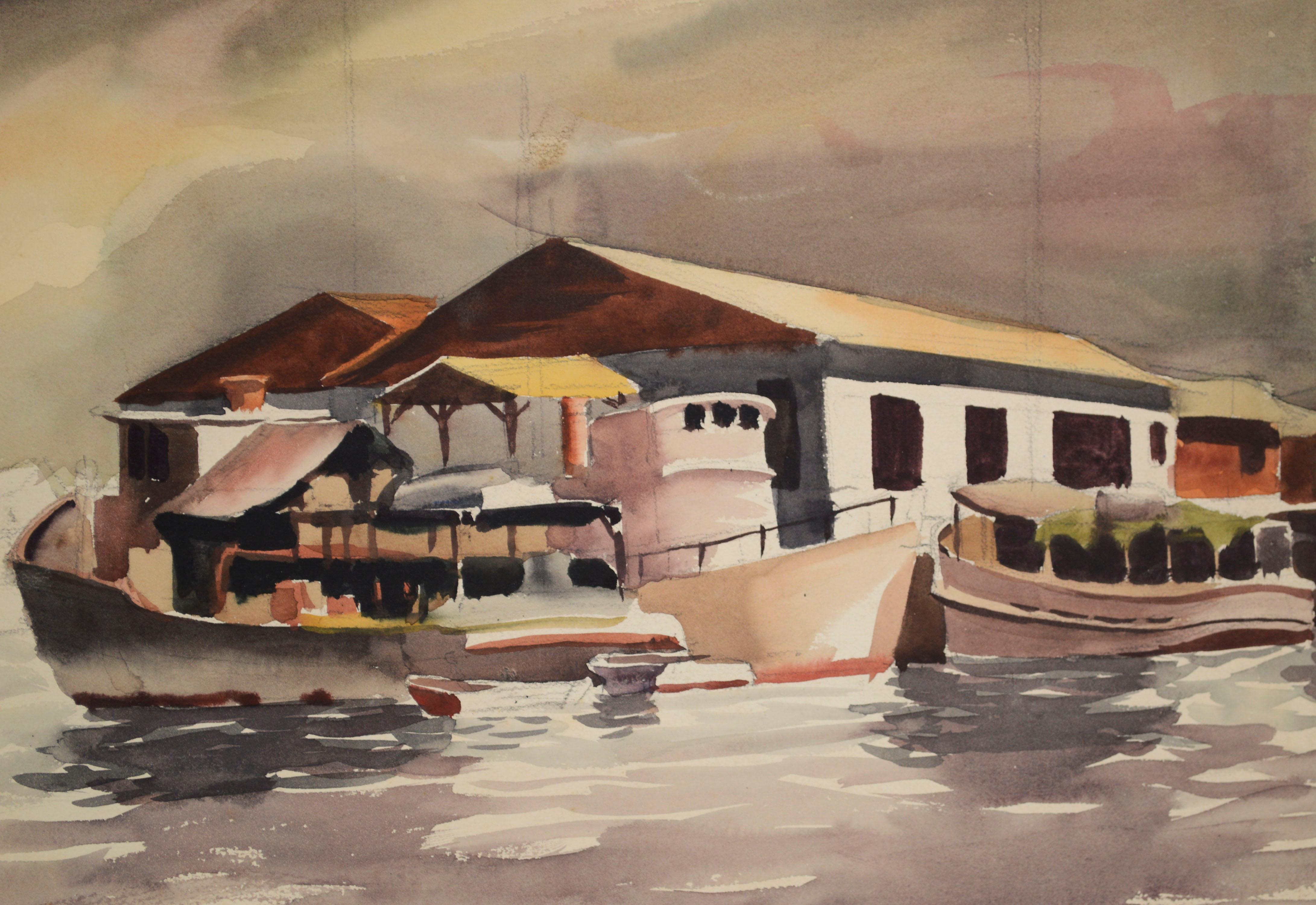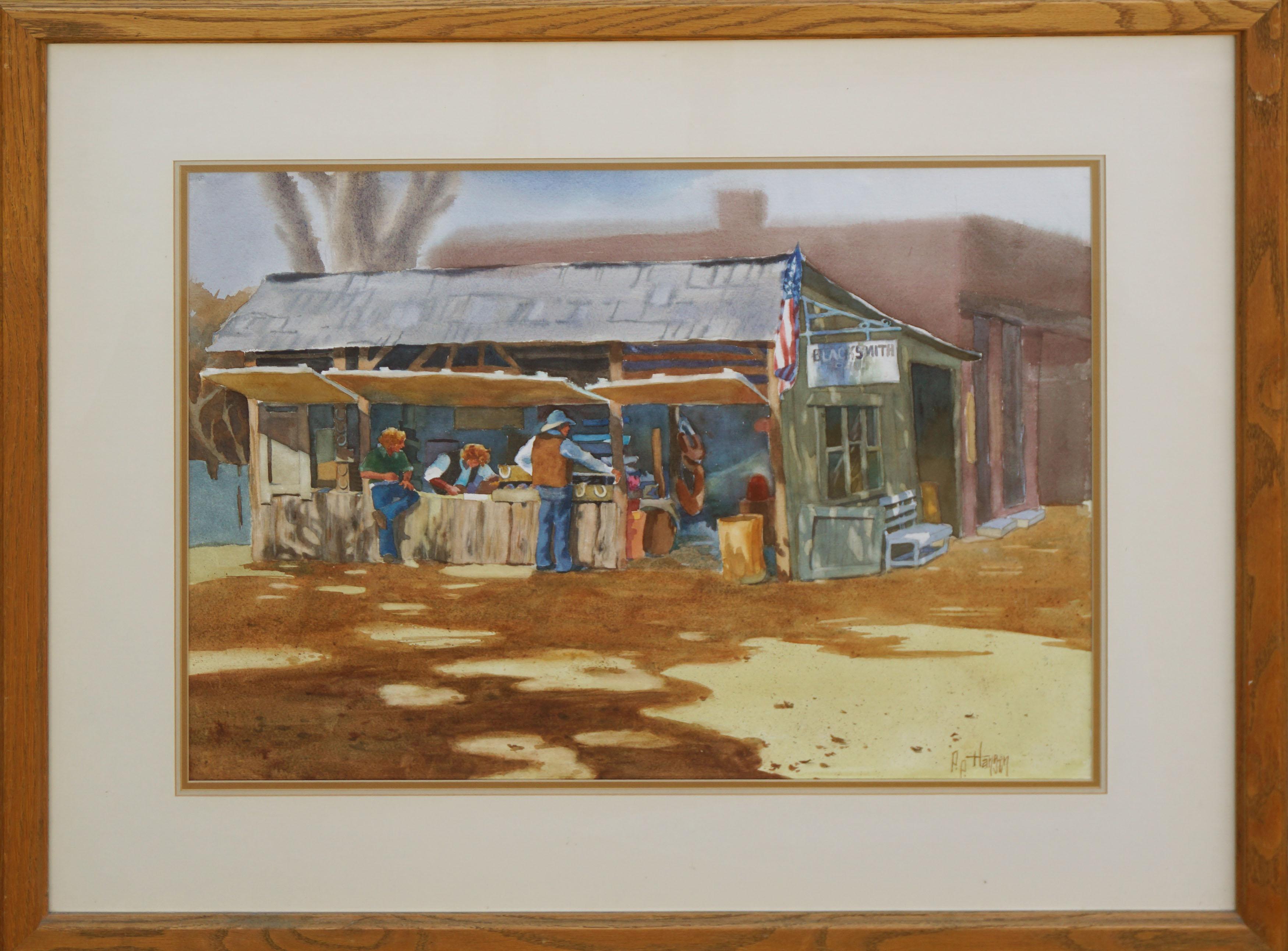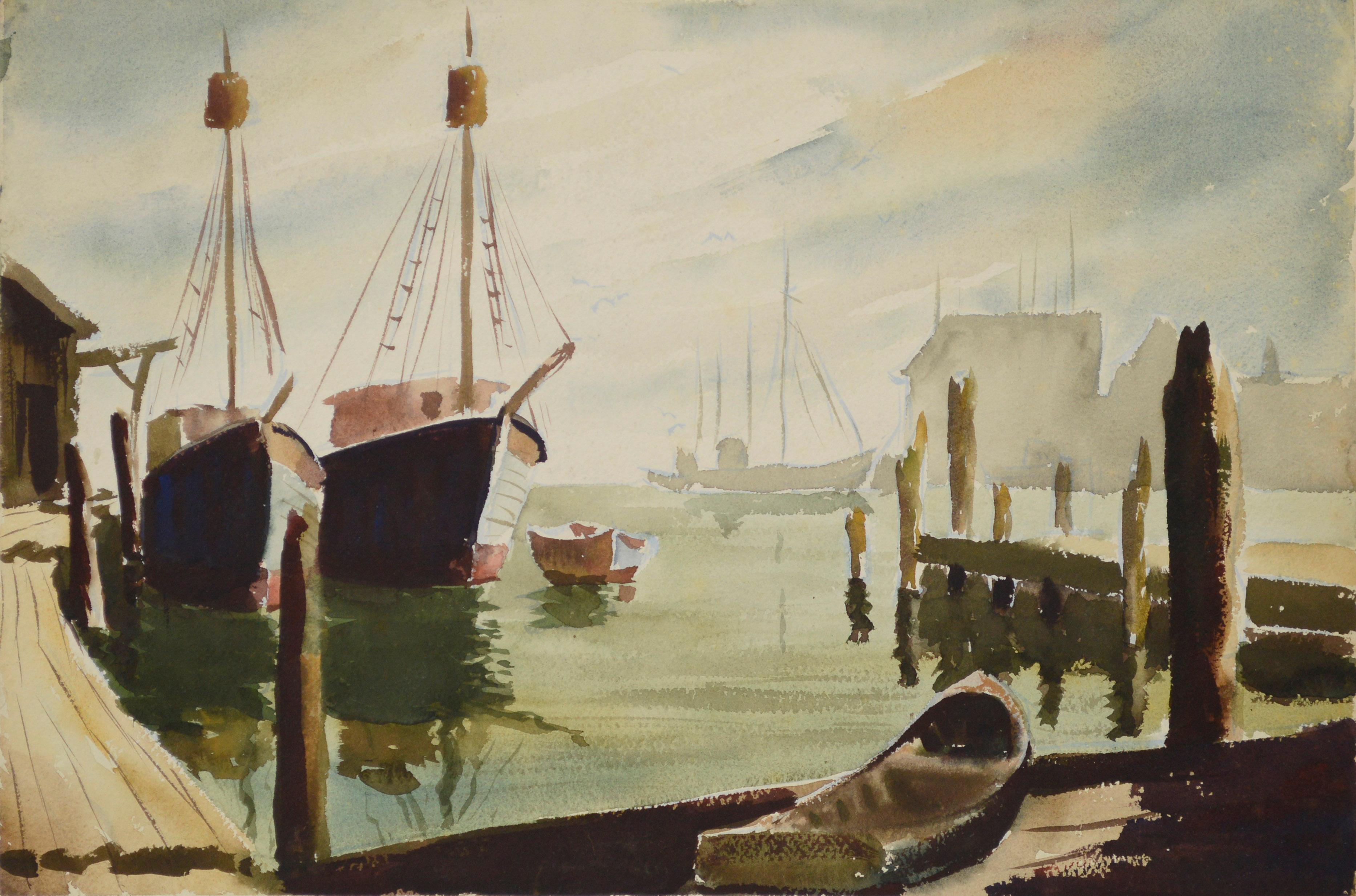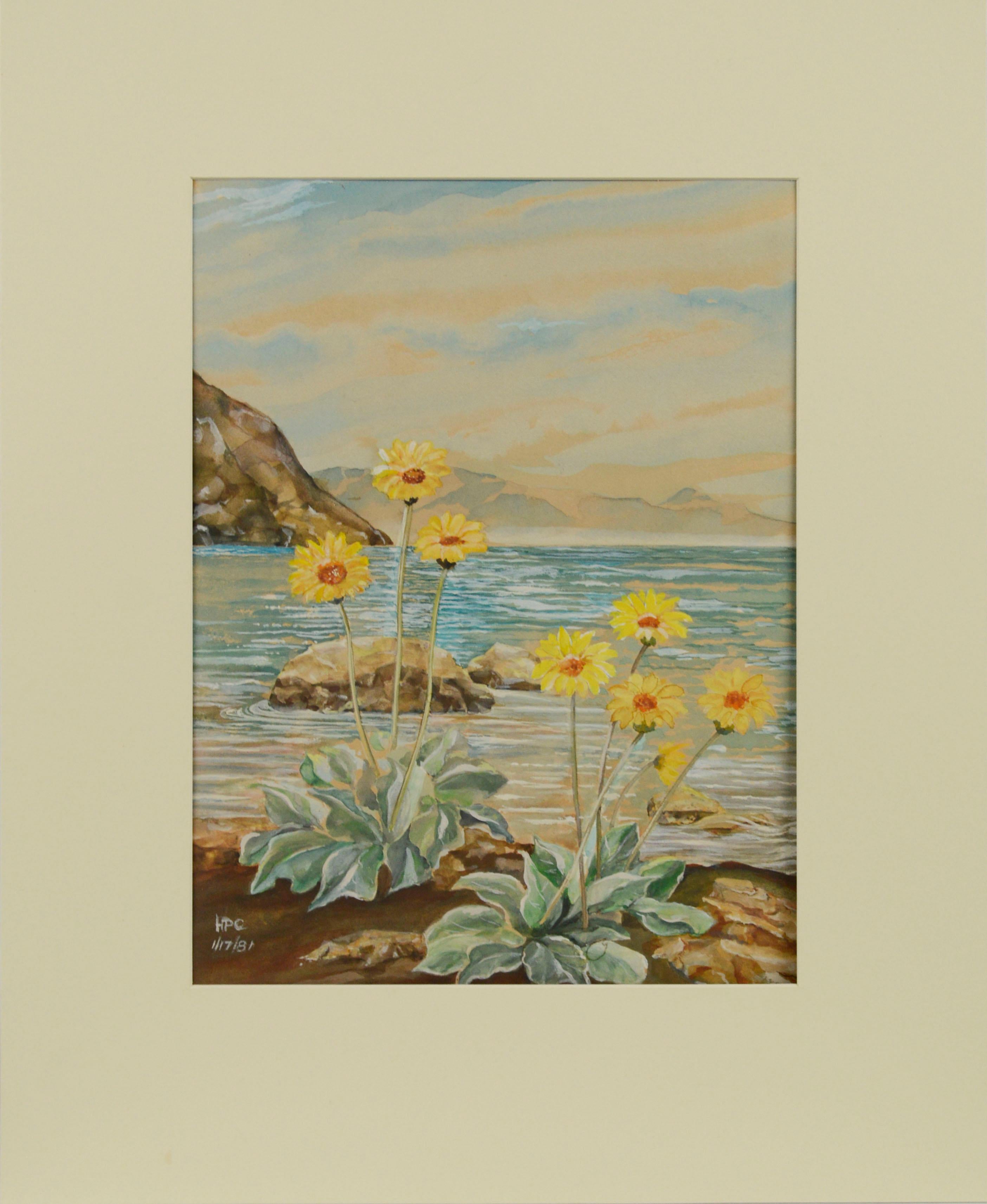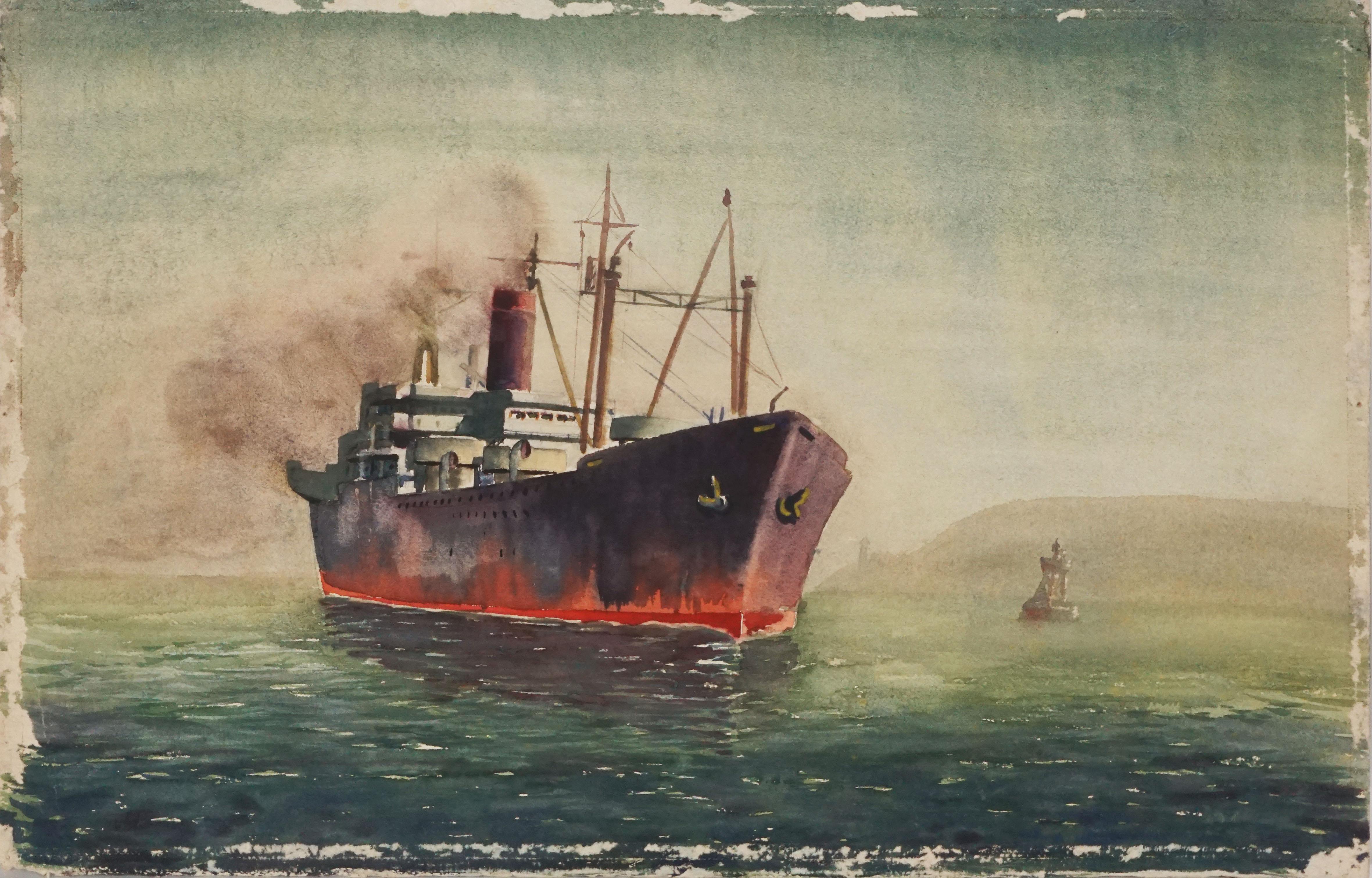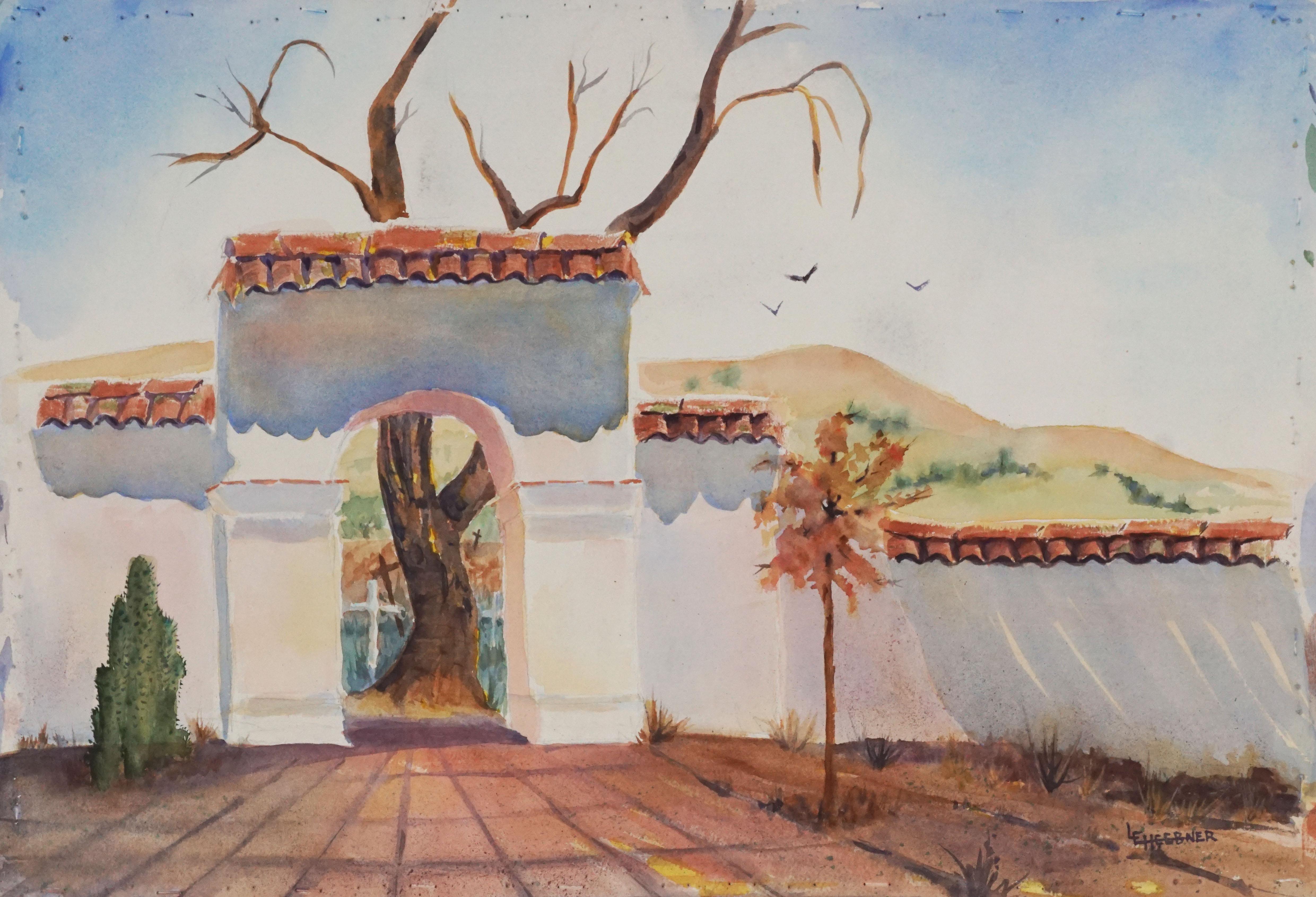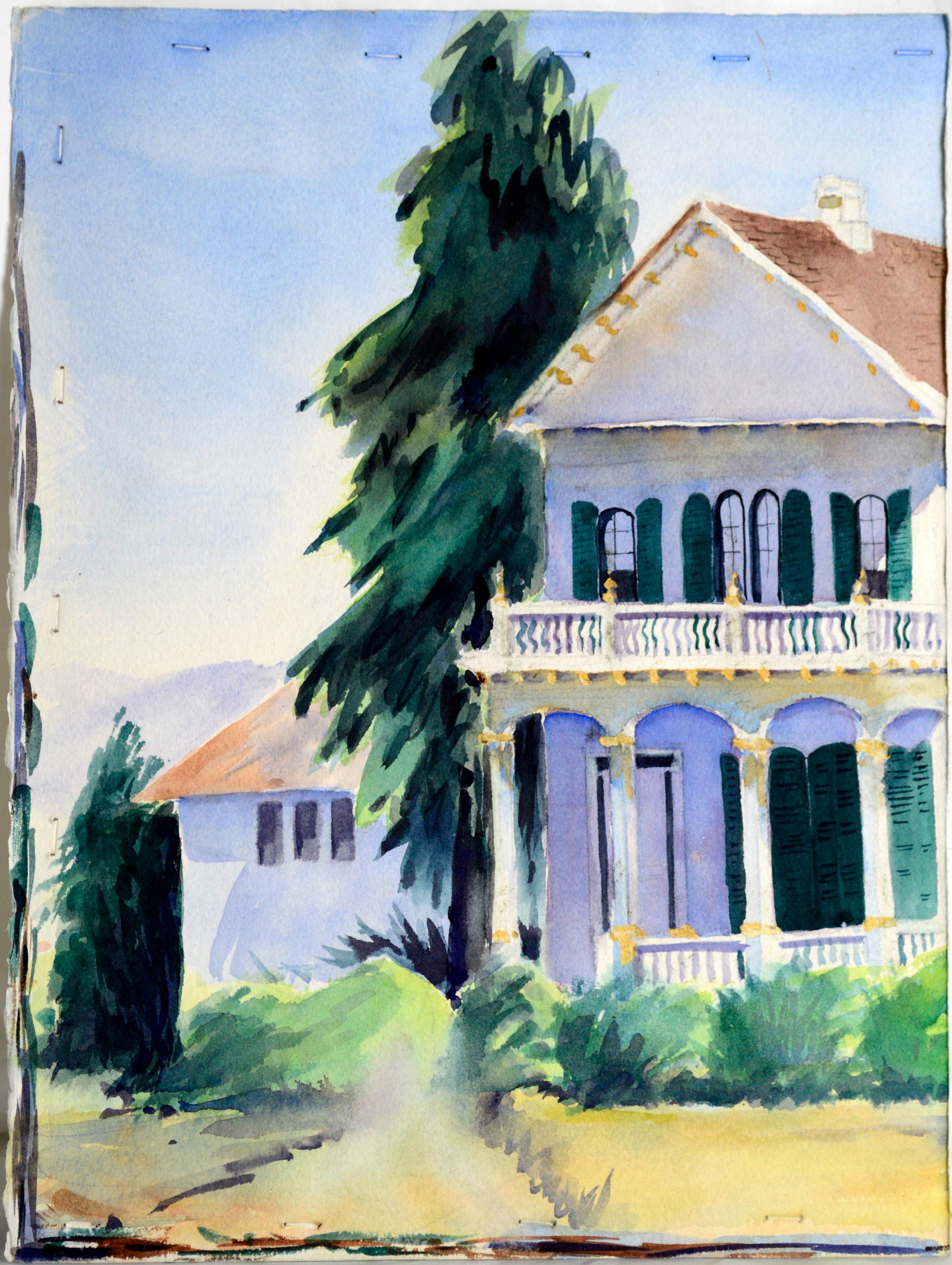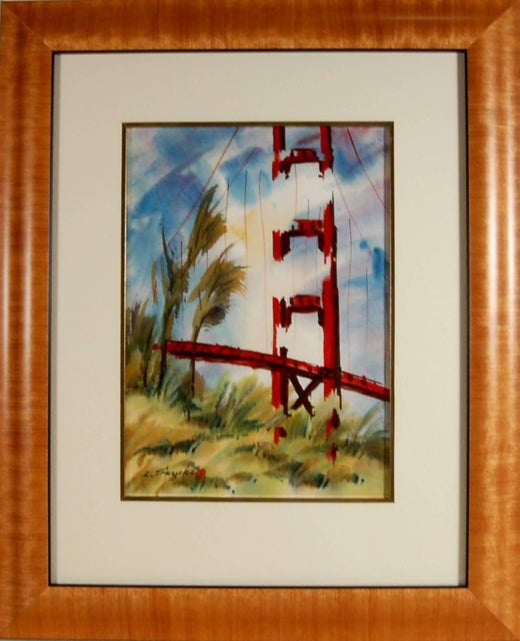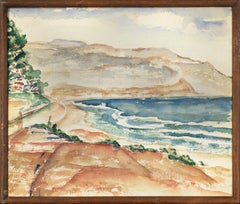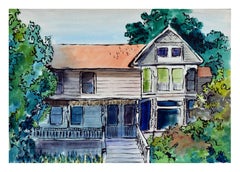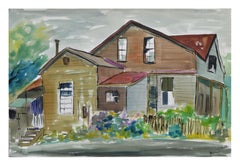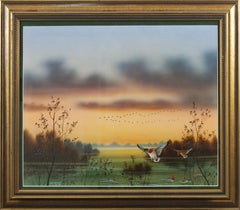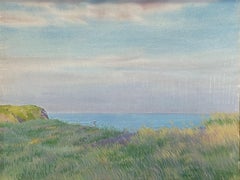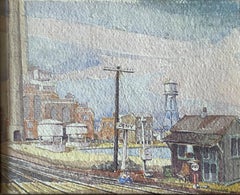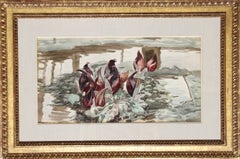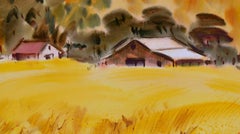
Country Barn Watercolor Landscape
View Similar Items
Want more images or videos?
Request additional images or videos from the seller
1 of 8
Lewis SuzukiCountry Barn Watercolor Landscape1979
1979
Price:$650
About the Item
- Creator:Lewis Suzuki (1920 - 2016, Japanese)
- Creation Year:1979
- Dimensions:Height: 15 in (38.1 cm)Width: 22.5 in (57.15 cm)Depth: 0.07 in (1.78 mm)
- Medium:
- Movement & Style:
- Period:
- Condition:
- Gallery Location:Soquel, CA
- Reference Number:Seller: JT-S39241stDibs: LU5422531011
Lewis Suzuki
Lewis Suzuki was born in Los Angeles, California of Japanese descent. As a boy of nine, Suzuki's father died (1929), and his mother returned to Japan with her six children. There, Suzuki excelled in the art programs in his primary school, attended Kawabata Art Academy in Tokyo, and began exploring the possibility of studying art in the U.S. In 1939, Suzuki moved back to Los Angeles, completed high school and took classes at Otis Art Institute, In 1941, Suzuki moved to Washington, D.C., where he worked at the Japanese Embassy primarily as a “tea boy” and took classes at Corcoran School of Art. After the bombing of Pearl Harbor, all embassy officials were to return to Japan, but Suzuki wished to remain in the U.S. He joined the U.S. Army and taught Japanese at the Military Intelligence Service Language School in Minnesota. After the war, he moved to New York, where he studied at the Art Students League and earned a living as a cabinet-maker. Since the 1950's he resided in Berkeley, California and painted around the Bay Area. There, he specialized in city scenes, rural scenes, seascapes and floral still lifes, done with the wet-into-wet watercolor painting style. Suzuki once said, “I feel that art has a place in enriching the life of humanity … Through my art, I try to strengthen that part of culture. And I feel that the arts should project the future of human society. To me, it cannot be non-objective or abstract in that sense.” He created a graphic work, “No More Hiroshimas,” and other peace posters for the American Friends Service Committee. Suzuki was a member of the politically active Graphic Arts Workshop from 1953 to 1963. Suzuki’s bold and imaginative use of color won him numerous awards, including two at the Society of Western Artists show at the De Young Museum in San Francisco. He served on the Berkeley Art Commission and was recognized by the City of Berkeley in 2010. Until recently, he continued to work at his studio on Grant Street in Berkeley, participating in such events as East Bay Open Studios and Berkeley Artisans Holiday Open Studios. His work is well exhibited, listed, and collected.
About the Seller
5.0
Platinum Seller
Premium sellers with a 4.7+ rating and 24-hour response times
Established in 1986
1stDibs seller since 2014
2,967 sales on 1stDibs
Authenticity Guarantee
In the unlikely event there’s an issue with an item’s authenticity, contact us within 1 year for a full refund. DetailsMoney-Back Guarantee
If your item is not as described, is damaged in transit, or does not arrive, contact us within 7 days for a full refund. Details24-Hour Cancellation
You have a 24-hour grace period in which to reconsider your purchase, with no questions asked.Vetted Professional Sellers
Our world-class sellers must adhere to strict standards for service and quality, maintaining the integrity of our listings.Price-Match Guarantee
If you find that a seller listed the same item for a lower price elsewhere, we’ll match it.Trusted Global Delivery
Our best-in-class carrier network provides specialized shipping options worldwide, including custom delivery.More From This Seller
View AllHermosa Beach Coastline - Watercolor On Paper
Located in Soquel, CA
Hermosa Beach Coastline - Watercolor On Paper
Watercolor painting depicting the Hermosa Beach coastline by California artist F.J. Whitlock (American, B- 1923 ). Vibrant hues of blue...
Category
1940s American Impressionist Landscape Paintings
Materials
Paper, Watercolor
Victorian Home Watercolor Landscape
By Diane Baldwin
Located in Soquel, CA
A place where lives have been well-lived is conveyed in this watercolor painting of a Victorian home by Diane Baldwin (American, 20th century). Signed "...
Category
1970s American Impressionist Landscape Paintings
Materials
Watercolor, Archival Paper
$320 Sale Price
20% Off
Home and Garden Landscape
By Diane Baldwin
Located in Soquel, CA
A vintage home and garden in bloom is beautifully captured in this watercolor by Monterey Bay Artist artist Diane Baldwin (American, 20th century). Signe...
Category
1970s American Impressionist Landscape Paintings
Materials
Watercolor, Archival Paper
$399 Sale Price
20% Off
Breath of Dawn, 1970's Sunrise Lake Landscape
Located in Soquel, CA
Gorgeous watercolor/gouache painting of a family of ducks swimming in a lake at dawn by Bill Reynolds (American, 1918-2008), 1970. The foreground is...
Category
1970s American Impressionist Landscape Paintings
Materials
Paper, Watercolor, Gouache
$560 Sale Price
20% Off
Waves Over Rocks Seascape and Seagulls
Located in Soquel, CA
Gorgeous watercolor seascape of waves over rocks by Donald Swyner (American, 20th Century), circa 1990. Signed lower left corner. Presented in rustic wood frame. Shipped without glas...
Category
1990s American Impressionist Landscape Paintings
Materials
Watercolor, Laid Paper
$960 Sale Price
20% Off
Boats in Harbor, Mid Century Double-Sided Watercolor
Located in Soquel, CA
A gorgeous double sided mid century impressionist watercolor painting depicting boats docked at the harbor on one side and a sailboat docked by a pier on verso by C. Campbell. Signed...
Category
Mid-20th Century American Impressionist Landscape Paintings
Materials
Paper, Watercolor
$380 Sale Price
20% Off
You May Also Like
"Monhegan Island, Maine, " Edward Dufner, American Impressionism Landscape View
By Edward Dufner
Located in New York, NY
Edward Dufner (1872 - 1957)
Monhegan Island, Maine
Watercolor on paper
Sight 16 x 20 inches
Signed lower right
With a long-time career as an art teacher and painter of both 'light' and 'dark', Edward Dufner was one of the first students of the Buffalo Fine Arts Academy to earn an Albright Scholarship to study painting in New York. In Buffalo, he had exchanged odd job work for drawing lessons from architect Charles Sumner. He also earned money as an illustrator of a German-language newspaper, and in 1890 took lessons from George Bridgman at the Buffalo Fine Arts Academy.
In 1893, using his scholarship, Dufner moved to Manhattan and enrolled at the Art Students League where he studied with Henry Siddons Mowbray, figure painter and muralist. He also did illustration work for Life, Harper's and Scribner's magazines.
Five years later, in 1898, Dufner went to Paris where he studied at the Academy Julian with Jean-Paul Laurens and privately with James McNeill Whistler. Verification of this relationship, which has been debated by art scholars, comes from researcher Nancy Turk who located at the Smithsonian Institution two 1927 interviews given by Dufner. Turk wrote that Dufner "talks in detail about Whistler, about how he prepared his canvasas and about numerous pieces he painted. . . A great read, the interview puts to bed" the ongoing confusion about whether or not he studied with Whistler.
During his time in France, Dufner summered in the south at Le Pouleu with artists Richard Emil Miller...
Category
Early 20th Century American Impressionist Landscape Drawings and Waterco...
Materials
Paper, Watercolor
"Train Station, " Max Kuehne, Industrial City Scene, American Impressionism
By Max Kuehne
Located in New York, NY
Max Kuehne (1880 - 1968)
Train Station, circa 1910
Watercolor on paper
8 1/4 x 10 1/4 inches
Signed lower right
Provenance:
Private Collection, Illinois
Max Kuehne was born in Halle, Germany on November 7, 1880. During his adolescence the family immigrated to America and settled in Flushing, New York. As a young man, Max was active in rowing events, bicycle racing, swimming and sailing. After experimenting with various occupations, Kuehne decided to study art, which led him to William Merritt Chase's famous school in New York; he was trained by Chase himself, then by Kenneth Hayes Miller. Chase was at the peak of his career, and his portraits were especially in demand. Kuehne would have profited from Chase's invaluable lessons in technique, as well as his inspirational personality. Miller, only four years older than Kuehne, was another of the many artists to benefit from Chase's teachings. Even though Miller still would have been under the spell of Chase upon Kuehne's arrival, he was already experimenting with an aestheticism that went beyond Chase's realism and virtuosity of the brush. Later Miller developed a style dependent upon volumetric figures that recall Italian Renaissance prototypes.
Kuehne moved from Miller to Robert Henri in 1909. Rockwell Kent, who also studied under Chase, Miller, and Henri, expressed what he felt were their respective contributions: "As Chase had taught us to use our eyes, and Henri to enlist our hearts, Miller called on us to use our heads." (Rockwell Kent, It's Me O Lord: The Autobiography of Rockwell Kent. New York: Dodd, Mead and Co., 1955, p. 83). Henri prompted Kuehne to search out the unvarnished realities of urban living; a notable portion of Henri's stylistic formula was incorporated into his work.
Having received such a thorough foundation in art, Kuehne spent a year in Europe's major art museums to study techniques of the old masters. His son Richard named Ernest Lawson as one of Max Kuehne's European traveling companions. In 1911 Kuehne moved to New York where he maintained a studio and painted everyday scenes around him, using the rather Manet-like, dark palette of Henri.
A trip to Gloucester during the following summer engendered a brighter palette. In the words of Gallatin (1924, p. 60), during that summer Kuehne "executed some of his most successful pictures, paintings full of sunlight . . . revealing the fact that he was becoming a colorist of considerable distinction." Kuehne was away in England the year of the Armory Show (1913), where he worked on powerful, painterly seascapes on the rocky shores of Cornwall. Possibly inspired by Henri - who had discovered Madrid in 1900 then took classes there in 1906, 1908 and 1912 - Kuehne visited Spain in 1914; in all, he would spend three years there, maintaining a studio in Granada. He developed his own impressionism and a greater simplicity while in Spain, under the influence of the brilliant Mediterranean light. George Bellows convinced Kuehne to spend the summer of 1919 in Rockport, Maine (near Camden). The influence of Bellows was more than casual; he would have intensified Kuehne's commitment to paint life "in the raw" around him.
After another brief trip to Spain in 1920, Kuehne went to the other Rockport (Cape Ann, Massachusetts) where he was accepted as a member of the vigorous art colony, spearheaded by Aldro T. Hibbard. Rockport's picturesque ambiance fulfilled the needs of an artist-sailor: as a writer in the Gloucester Daily Times explained, "Max Kuehne came to Rockport to paint, but he stayed to sail." The 1920s was a boom decade for Cape Ann, as it was for the rest of the nation. Kuehne's studio in Rockport was formerly occupied by Jonas Lie.
Kuehne spent the summer of 1923 in Paris, where in July, André Breton started a brawl as the curtain went up on a play by his rival Tristan Tzara; the event signified the demise of the Dada movement. Kuehne could not relate to this avant-garde art but was apparently influenced by more traditional painters — the Fauves, Nabis, and painters such as Bonnard. Gallatin perceived a looser handling and more brilliant color in the pictures Kuehne brought back to the States in the fall. In 1926, Kuehne won the First Honorable Mention at the Carnegie Institute, and he re-exhibited there, for example, in 1937 (Before the Wind). Besides painting, Kuehne did sculpture, decorative screens, and furniture work with carved and gilded molding. In addition, he designed and carved his own frames, and John Taylor Adams encouraged Kuehne to execute etchings. Through his talents in all these media he was able to survive the Depression, and during the 1940s and 1950s these activities almost eclipsed his easel painting. In later years, Kuehne's landscapes and still-lifes show the influence of Cézanne and Bonnard, and his style changed radically.
Max Kuehne died in 1968. He exhibited his work at the National Academy of Design, the Art Institute of Chicago, the Carnegie Institute in Pittsburgh, the Memorial Art Gallery of the University of Rochester, and in various New York City galleries. Kuehne's works are in the following public collections: the Detroit Institute of Arts (Marine Headland), the Whitney Museum (Diamond Hill...
Category
1910s American Impressionist Landscape Drawings and Watercolors
Materials
Paper, Watercolor
Study for Skunk Cabbage, Watercolor Painting by Charles Burchfield 1931
By Charles E. Burchfield
Located in Long Island City, NY
A watercolor painting by Charles Burchfield from 1931. A still life botanical painting of a skunk cabbage in natural setting. Signed and dated in lower right, beautifully matted and framed in gold ornate frame. The painting has an excellent provenance through top New York Galleries including DC Moore...
Category
1930s American Impressionist Landscape Paintings
Materials
Paper, Watercolor
"Canal at Indian Mound Road" RARE Ben Fenske Gouache work on paper black & white
By Ben Fenske
Located in Sag Harbor, NY
Painted during the 2015 Winter Equestrian Festival in Wellington, Florida. A black and white depiction of a canal, is barely recognizable, due to Fenske's wild brushstrokes and lack...
Category
21st Century and Contemporary American Impressionist Landscape Paintings
Materials
Paper, Gouache
Mount Monadnock
By Frank Weston Benson
Located in Milford, NH
An exceptional watercolor of Mount Monadnock snow capped in winter in New Hampshire by American artist Frank Weston Benson (1862-1951). Benson was born in Salem, Massachusetts and went on to study in Boston at the Museum School of Fine Arts and later with Julian Lefebvre and Gustave Boulanger at the Academie Julian in Paris. Benson was well known for his impressionist landscapes and seascapes, and etchings of hunting scenes.
Watercolor on paper, signed lower left F.W. Benson with inscription “To Mrs Bush,” titled on Vose Galleries...
Category
Early 20th Century American Impressionist Landscape Drawings and Waterco...
Materials
Paper, Watercolor
Mount Monadnock
By Gifford Beal
Located in Milford, NH
A fine monochromatic watercolor landscape painting of Mount Monadnock in New Hampshire by American artist Gifford Beal (1879-1956). Beal was b...
Category
Mid-20th Century American Impressionist Landscape Drawings and Watercolors
Materials
Paper, Watercolor
